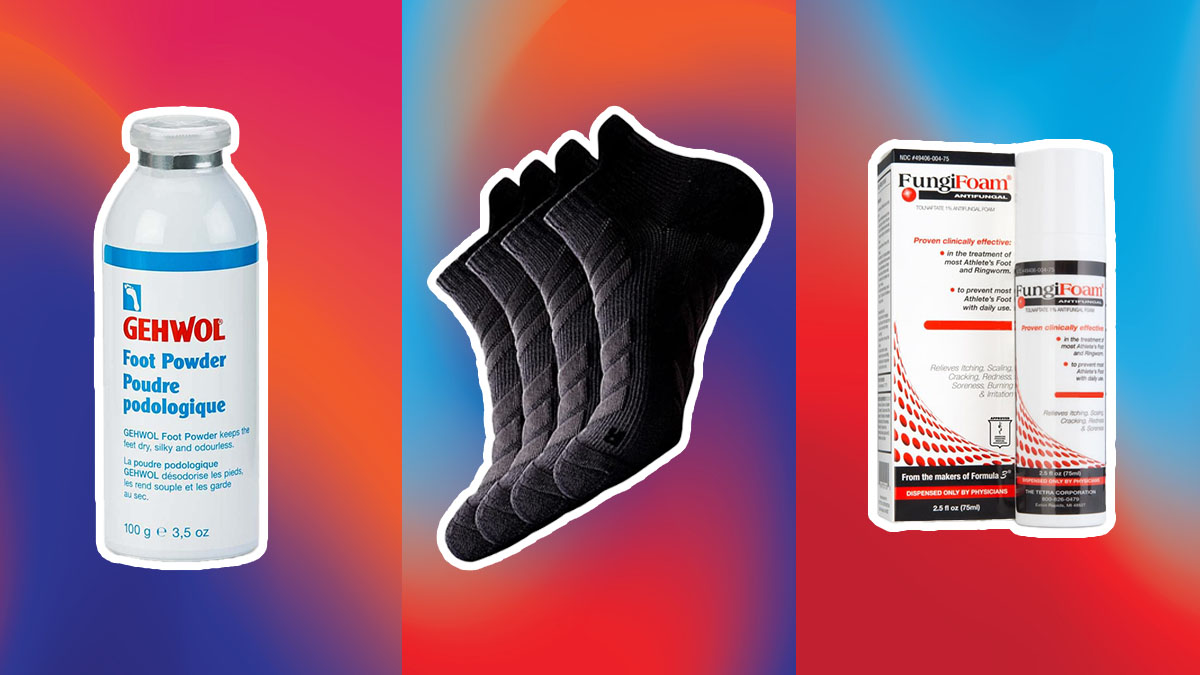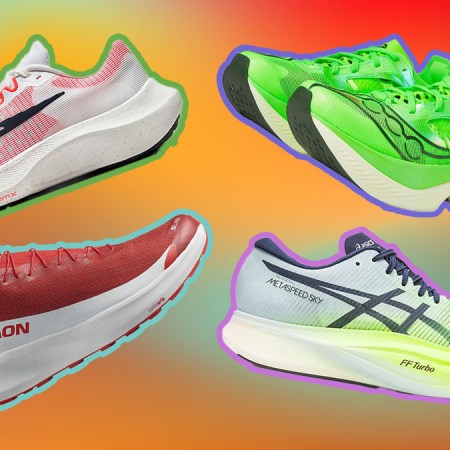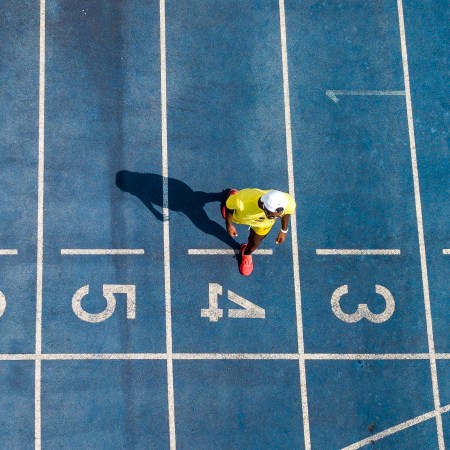Nota bene: All products in this article are independently selected and vetted by InsideHook editors. If you buy something, we may earn an affiliate commission.
Whether you have ingrown toenails, athlete’s foot or just really thick calluses, your feet could likely use some TLC. A pedicure at a corner salon seems like a reasonable solution, but unsanitary practices and cross-contamination might hurt your foot health more than it helps. To get an expert’s take on how to best care for your feet, I turned to Marcela Correa. She’s a medical pedicurist and the founder of Medi Pedi in midtown Manhattan.
Correa’s passion for foot care started in her home country of Uruguay, where she studied podology and worked with a professional soccer team. She saw firsthand how foot injuries could sideline skilled athletes, and how proper foot care could make all the difference in preventing them. At Medi Pedi, Correa regularly treats professional athletes and dancers suffering from foot fungus, hammer toes and more. When she moved to the U.S., Correa was surprised to find a lack of understanding about foot care, particularly in the realm of hygiene and prevention.
From ballerinas to NHL, MLB and NBA stars, high net-worth individuals entrust their precious feet to Marcela Correa’s expert care. She’s seen it all, and truly loves feet — she doesn’t believe there’s such a thing as ‘ugly feet.’ In fact, she encourages her clients to take before and after photos so they can see the progress they’ve made. Now, if you’re ready to devote some attention to your feet, it’s time to take a cue from the pros and listen to Correa’s recommendations. Correa helped us find products for common foot issues like athlete’s foot and ingrown nails. She also helped us find some options for specific sports like hiking, running and skiing. Read on to learn about some of the products she personally vouches for.
Products to Treat Athlete’s Foot
Unsurprisingly, athlete’s foot is a common issue for those seeking Correa’s expertise. Her recommendation is a foam anti-fungal treatment called FungiFoam. The thick, cream formula penetrates deeply into the skin using oil-soluble tolnaftate to heal athlete’s foot in just a few days. Not only does it effectively treat the infection and flaking skin, but it also provides relief from itching. FungiFoam is formulated to moisturize without leaving a greasy residue, which is very important because cracked heels are one of the most uncomfortable side effects of athlete’s foot. Correa suggests wearing these Heel Hero Gel Protectors for at least five minutes after applying the foam so it doesn’t get wiped off whether walking around barefoot or pulling on a pair of socks.
Products to Treat Ingrown Nails
According to Correa, many of her clients mistake skin buildup for ingrown nails. Tight shoes and long nails can cause toes to overlap, which makes the nail dig (painfully) into the side of the toe. Correa has seen this condition across many sports, especially with hockey players whose narrow skates confine toes. She recommends Gehwohl Fluid and adds that “it’s not only applying and walking away” — you should massage the fluid into your nail. The active ingredient is clove oil, which has antimicrobial and antiseptic properties. It’s a clear liquid, with a thin texture that goes a long way (you only need a few drops per application). Correa recommends using the fluid in conjunction with toe separators. These “Preven-toe” Gel Aligners will prevent toes from overlapping and can be worn comfortably with socks and shoes. Correa says once you start using this fluid the skin may still “build-up, [but] it’s going to build much slower this time,” because the fluid will help diminish friction.
Products to Treat Other Nail Issues
Correa recently met with the podiatrist who works with Real Madrid, and she saw the facility where players’ walks are filmed and studied. This level of hyper-attention to feet is what Correa also provides. She explains that bruised nails are one of the most common problems for soccer players (because they often strike the ground). If left unattended, bruising can pave the way for fungus, so Correa recommends trimming nails as short as possible so blood can drain. If it does become fungus, Correa knows what works best. She estimates that close to 90% of athletes have suffered from nail fungus (not necessarily related to bruising). The combination of sweaty feet and tight performance shoes is a recipe for fungus. Moisture is very much the enemy when it comes to persistent toe fungus. Correa suggests using toe sleeves when showering to minimize water contact with infected nails. For treatment, Correa recommends twice-daily use of Formula 3, an anti-fungal oil that absorbs in seconds. It’s best applied after showering when the skin has more capacity for absorption. Correa recommends massaging the product into infected nails for better penetration. Fungus can sometimes make the toenail lift from the toe bed and create a gap so massage also helps lessen this gap.
Products for Marathon Runners
Marathon runners often seek out Correa leading up to a big race. She advises coming in for a Medi Pedi treatment at least one week before the race. If you’re clipping your own nails (aim for super round corners). You should abide by this one-week buffer because clipping too close to the race can make nails very sensitive. She also recommends 100% cotton socks (this 4-pack from Amazon meets her criteria) because synthetic materials can lead to overheating. Finally, when applying foot powder, Correa advises blending it the same way you would foundation (make-up) so there is no excess residue. This Gehwohl foot powder keeps feet dry and odorless by using tapioca starch, micronized zinc oxide and Bisabolol.
Products for Hikers
Hiking boots are notoriously difficult to break in. Hikers often wear their blisters (and scars) as badges of honor. Even if you can’t dodge blisters completely, Correa offers some advice to make the odds lean in your favor. Any time you’re preparing to hike, Correa suggests exfoliating beforehand. Even with great-fitting boots, feet will shift up and down much more than regular walking and that friction creates a blister-friendly environment. What develops when you don’t exfoliate is a paste made from dry skin called calluses. That paste and sweat are what eventually lead to blisters. To slough off that paste-creating dead skin, Correa suggests a two-step process. First, use this Cuccio Stainless Steel File that uses grit abrasive paper to remove dead skin. It’s easy to sanitize after each use. You can even replace the grit paper when it wears down. Next apply Lipidro Cream, which Correa says further exfoliates feet. It also helps hold moisture “so the skin is elastic and not dry” when you’re hiking. The cream features urea, which breaks the cell bond of the rough skin to soften calluses.
Skiers
Skiers frequently come to Correa complaining of athlete’s foot, and as an advocate of preventative action, Correa points them toward Medi Pedi’s own UV Sterilizer. The sterilizer kills bacteria in your shoes in just fifteen minutes. It works with ski boots, stilettos, sneakers and even children’s shoes.
We've put in the work researching, reviewing and rounding up all the shirts, jackets, shoes and accessories you'll need this season, whether it's for yourself or for gifting purposes. Sign up here for weekly style inspo direct to your inbox.





















